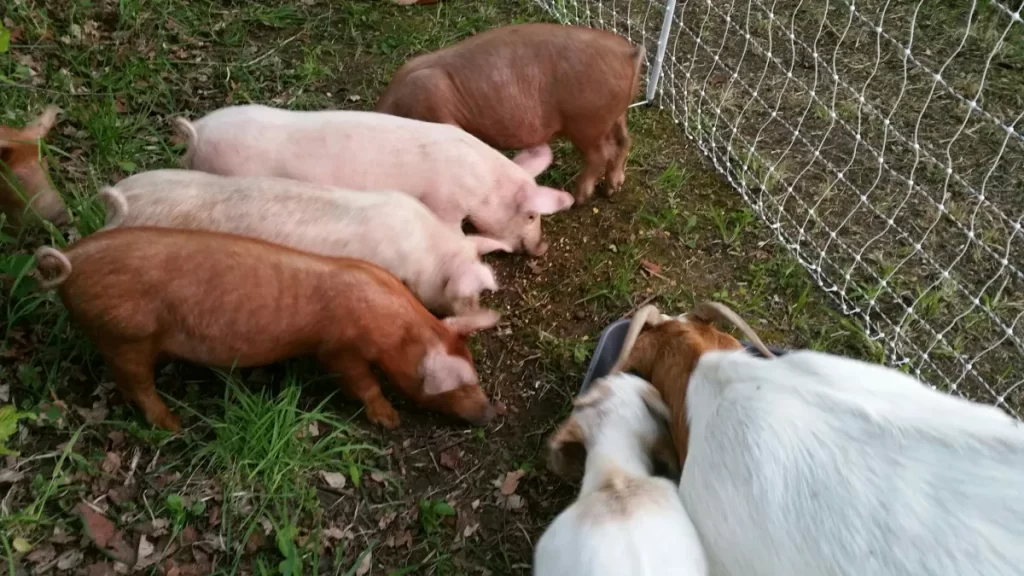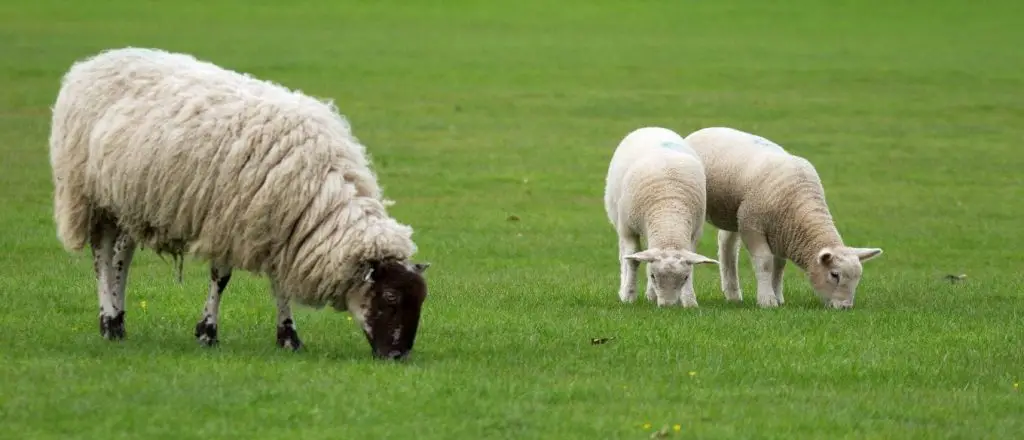With the rise of free-range farms and shortage of farming space, it is profitable to be able to raise different animal species together on the same piece of land. Raising different animal species in the same space can also save farmers resources as the different animals can feed on different resources that ensuring efficient utilization of available resources. In some cases, companion animals can rid of unpalatable forage plants or pests. The idea of raising goats, ruminants, and pigs, monogastric animals in the same space sounds plausible as the animals can utilize different food resources and spaces in the pasture or pen space.
Contents
How do Pigs and Goats Interact Socially?
To better understand what would happen if we put pigs and goats in the same space we need to understand how the different animals interact with each other in their social groups. When you understand the social hierarchies and behaviors of the pigs and goats you are in a better position to make decisions on housing and feeder design
How are Pig Social Groups Arranged?
Pigs are very intelligent and social animals, and under free-ranging conditions can form groups of about eight to nine individuals led by sows called sounders. The male pigs, boars, tend to be solitary only joining the group to mate or share food. Pigs are generally not territorial, having overlapping territories with other sounders, males only show aggression during mating periods. In confined conditions, larger groups can be seen but are dominated by one or two pigs, who will have asserted their dominance as early as the first week of life. Pigs are not very picky eaters and will feed on what is seasonally available varying from forages, berries, tubers, mushrooms, and various herbs. Contrary to popular belief pigs are very hygienic animals having a separate area for defecating and urinating even from a very early age.
How are Goat Social Groups Arranged?
Goats live in a hierarchal grouping with dominance asserted by sex, age, and the presence of horns. This perking order normally has one buck and a doe being in charge of the group, observations have shown that the buck protects the herd while the doe trains the rest of the herd on foraging and other behaviors. When a dominant doe comes upon a poisonous plant she will sniff it and snort to show dislike, the other goats in the herd will also come to sniff the plant so that they can recognize it later, after this the buck trembles the plant to kill it. Hierarchy in these groups is very fluid and can change from time to time with goats often confusing their human charges as either the dominant buck or doe depending on which activity the human interacts with them. Like pigs, goats are also not territorial keeping vast tracks of land to forage with other species.
Do Goats and Pigs Have Common foods?
Most two-hoofed animals like goats and cows are herbivores, while pigs are omnivores although they are part of this same group of animals with two hooves called Artiodactyla. This presents a challenge when feeding pigs and goats commercial feeds as the feeds are formulated differently. Although both animals can graze and forage their requirements are drastically different. When keeping pigs and goats one has to provide separate feeding areas, this can be costly and hard to implement with mostly pigs trembling the goat feed. Both species will nibble on the others feed but challenges will arise also when feeding medicated feeds, you need to carefully consider the medications in the feed if they are safe for both goats and pigs.
Can Pigs Transmit diseases to Goats?
Pigs are incredibly hardy creatures when it comes to diseases, most diseases that affect other livestock do not affect pigs. An example are strains of E.coli that can cause scours in goats and not in pigs. Pigs can harbor these diseases or disease agents like worms, with pigs not getting sick but passing them on to goats. Pigs can also pass on foot and mouth disease to goats, although incidences of this are low this is a highly transmittable and commercially important disease for both animals.
Constraints of Keeping Goats and Pigs Together
We have discussed several constraints of keeping pigs and goats together although this does not rule out the possibility of having the animals in the same space, we will just outline them below.
- Pigs and goats are very clever and social animals but prefer to be in the company of their own species, mixing them can cause stress to the animals and conflict for resources in terms of space and feed
- Pigs are omnivores which means their diet is more varied than that of goats and will not hesitate to eat goat kids if there is a feed shortage
- Pigs can pass on parasites and diseases to goats
Considerations When Introducing Feral Pigs and Goats.
Wild populations of pigs and goats have very different behavior from that of their domesticated counterparts. It becomes critically important if such feral animals are introduced or come into the herd to monitor the behavior of the domesticated herd or get rid of them altogether as they can severely disrupt the whole operation. This is especially true for free-range herds, and farmers need to put up and repair fences regularly as both pigs and goats are notorious for destroying fences.
Conclusion
Pigs can live with goats in the same space but careful considerations have to be given to provide adequate resources to avoid conflicts between the two different species. Although both species of animals are not territorial it is important to give them access to different sleeping areas for example. Different feeding spaces also have to be provided for both pigs and goats to be able to feed them the right feeds that meet the nutritional requirements of the different species. In a free-range setting pigs and goats can be kept together but in intensive farming systems this would not be recommended as feeding and treating the two species can be a challenge.




